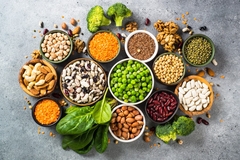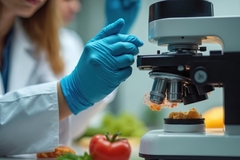
- Industry news
Industry news
- Category news
Category news
- Reports
- Key trends
- Multimedia
- Journal
- Events
- Suppliers
- Home
- Industry news
Industry news
- Category news
Category news
- Reports
- Key trends
- Multimedia
- Events
- Suppliers
UN Declares Global Fight on Antimicrobial Resistance

22 Sep 2016 --- Global leaders gathered at the United Nations yesterday for a historic high-level debate concerning antimicrobial resistance where they committed to address challenges to health, food security and development. During the talks in New York, leaders signaled an unprecedented level of attention to curb the spread of infections that are resistance to antimicrobial medicines.
This is only the fourth time ever the issue of AMR has been discussed at such a high level and taken up by the UN General Assembly and for the first time Heads of State pledged to take a broad, coordinated approach to address the root causes of AMR in sectors including human and animal health, agriculture and food.

Antimicrobial resistance (AMR) happens when bacteria, viruses, parasites, fungi develop resistance against medicines that were previously able to cure them. The high levels of AMR already seen in the world today are the result of overuse and misuse of antibiotics and other antimicrobials in humans, animals (including farmed fish), and crops, as well as the spread of residues of these medicines in soil, crops, and water. Within the broader context of AMR, resistance to antibiotics is considered the greatest and most urgent global risk requiring international and national attention.
"Antimicrobial resistance threatens the achievement of the Sustainable Development Goals and requires a global response. Member states have agreed upon a strong political declaration that provides a good basis for the international community to move forward. No one country, sector or organization can address this issue alone,” says president of the UN General Assembly H.E. Peter Thomson.
Countries will use the Global Action Plan of Antimicrobial Resistance as a blueprint to develop their own national plans on AMR and leaders recognized the need for stronger systems to monitor drug-resistant infections and the volume of antimicrobials used in humans, animals and crops, as well as increased cooperation and funding. They pledged to strengthen regulation of antimicrobials, improve knowledge and awareness, and promote best practices. Fostering innovative approaches and using alternatives to antimicrobials and new technologies for diagnosis and vaccines, is also part of the commitment.
“Antimicrobial resistance poses a fundamental threat to human health, development and security. The commitments made must now be translated into swift, effective, lifesaving actions across the human, animal, and environmental health sectors. We are running out of time," says Dr Margaret Chan, Director-General of WHO.
Leaders called on WHO, Food and Agriculture Organization of the United Nations (FAO) and World Organization for Animal Health (OIE) to collaborate with development banks and other stakeholders to coordinate their planning and actions and report back to the UN General Assembly in September 2018.
"AMR is a problem not just in our hospitals, but on our farms and in our food, too. Agriculture must shoulder its share of responsibility, both by using antimicrobials more responsibly and by cutting down on the need to use them, through good farm hygiene," said Dr Jose Graziano da Silva, Director-General of FAO.
"Effective and accessible antibiotics are as vital for protecting animal health and welfare and good veterinary medicine as they are for human health. We urge national authorities to strongly support all sectors involved, through promotion of responsible and prudent use, good practices and implementation of established standards and guidelines," added Dr Monique Eloit, Director-General of OIE.
Over the last 50 years food production methods have intensified and there has been an increase in antimicrobial use in agriculture. Animals are treated with these medicines either when they are already sick or to prevent diseases from spreading around a flock or within a farm. The use is prevalent in livestock but also the medicines are used in aquaculture and to a lesser extent antimicrobial substances are spread on plant crops and sometimes low concentrations are added to animal feed to stimulate growth.
Last week, FoodIngredientsFirst reported how FAO has already pledged to help countries equip their agricultural sectors and farms to respond to the growing threat of AMR through its new Action Plan.
Meanwhile the European Food Safety Authority (EFSA) is providing scientific advice to risk managers on the risks to human and animal health related to the spread and transfer of resistance in the food chain and in animals.
EFSA experts are currently working on a scientific opinion on how to reduce the use of and the need for antimicrobials in animals. They are also assessing the risk of antimicrobial resistance emerging due to calves being fed with milk containing residues of antibiotics.
by Gaynor Selby











